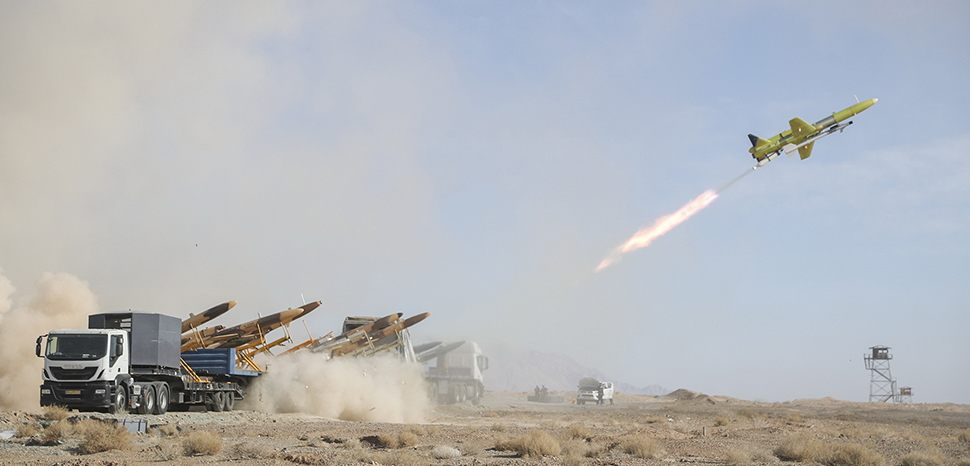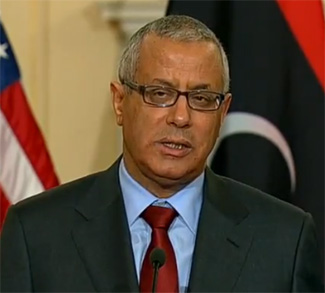In recent years, the utilization of drones in diplomacy and the export of military unmanned aerial vehicles (UAVs) have become essential tools for nations seeking to achieve their foreign political objectives. Being relatively low-cost compared to conventional military aircraft, armed UAVs have already changed the face of modern warfare. The accuracy of precision strikes, coupled with the almost complete protection offered to their operators, make UAVs the increasingly preferred choice for many nations in military operations. Even non-state actors, including terrorist groups, are taking advantage of the global proliferation of drone technologies, and incorporating them into their modes of operation. This has been evident in the attacks by Houthis in Yemen on commercial vessels in the Red Sea and the Gulf of Aden.
The demonstrable use of drones by the Iran-backed Houthi group in Yemen is a clear example of how nations are utilizing such technologies to influence and advance their geopolitical agenda. In this respect, the United States’ Defense Intelligence Agency (DIA) has recently confirmed that the Houthis’ in Yemen are using Iranian UAVs in their attacks across the Middle East. The report by the DIA further highlights that since 2014, Iran’s Islamic Revolutionary Guard Corps-Qods Force (IRGC-QF) has provided the Houthis with an arsenal of sophisticated weapons, and that the aid received from Iran has empowered the Houthis to conduct a campaign of UAV attacks against commercial shipping in the Red Sea and the Gulf of Aden since November 2023, which has negatively affected the safety of commercial shipping in one of the world’s most critical waterways, which roughly sees almost 15% of global trade passing through it.
In 2019, the Houthis revealed a range of UAVs, glimpsed in various media reports. The Houthis primarily use Hudhed-1, Raqib, Rased, and Sammad-1 for reconnaissance, with the option of equipping the Sammad-1 platform with weapons. Additionally, there are Qasef-1, Qasef-2K, Sammad-2, and Sammad-3, which are combat UAVs. Although the Houthis state that they have produced the UAVs domestically, it might be more reasonable to assume that they primarily depend on smuggling smaller components, which are becoming more advanced in design and construction, with support from Iran.
Although Iran is not directly involved in the Houthis’ Red Sea UAV attacks, its UAV technology supply and operational expertise have allowed it to indirectly influence regional tensions and the intensity of UAV attacks on commercial vessels, as well as on military vessels taking part in the US-led operation in the Red Sea. Iran has also supplied UAVs to its loyalists and proxy groups in other parts of the Middle East as a part of its strategy to enhance its regional reach. This includes the supply of UAVs to Hezbollah in Lebanon and pro-Iranian militias in Iraq and Syria. Looking at the broader Middle East, reports have indicated that Iran has supplied UAVs to Algeria for the use of the Polisario guerrilla fighters, which has been a major concern for Morocco and has triggered concern about stability in North Africa. However, the threat to the African region is not only posed by the supply of Iran’s UAVs to Algeria; Iran’s UAVs and technical expertise are believed to also be influencing the course of the ongoing civil war in Sudan.
Further afield, it is reported that Venezuela is also assembling Iranian UAVs. Although reports on Iran’s cooperation with Venezuela over UAVs as well as other industrial sectors go back more than a decade, the cooperation has appeared to intensify over the past few years. This has also presented the opportunity for both countries to forge a closer oil alliance as US sanctions on the Venezuelan oil industry are expected to return in April. In the same vein, since the start of the Russian-Ukrainian war, Iran has supplied at least 6,000 Shahed drones to Russia. Even though this happened under the radar of the West, the strategic cooperation over UAVs between Russia and Iran and the support Iran has provided to Russia allowed both sides to form closer ties across different fronts. With both sides facing international sanctions, this strategic cooperation is intensifying day by day.
Although Iran’s track record of supplying UAVs has been mainly associated with non-state actors, militias, and sanctioned governments, Iran appears to be positioning itself in the international UAV market. In this regard, Iran has officially exhibited at Qatar’s Doha International Maritime Defense Exhibition and Conference (DIMDEX 2024), where it presented its “GAZA” UAV, which is capable of carrying a payload of up to 500 kg. During the conference, one of Iran’s booth representatives indicated that all displayed armaments are available for export to any country except the United States and Israel.
With no legal restrictions that prevent it from selling its UAVs around the world, Iran is clearly aiming to supply its UAVs to all geopolitically tense regions where it can gain a political advantage or influence. Moreover, Iran is apparently not worried that these products will fall into the hands of dangerous non-state actors or terrorist groups. How the international community reacts to the rapidly emerging threat posed by Iran’s mounting UAV capabilities, along with its increasing export reach and the utilization of such in its strategic diplomatic endeavors, remains a critical aspect that will require international coordination and cooperation.
A major risk already exists for neighboring Gulf countries and the broader Middle East when it comes to how continuously and rapidly Iran is innovating its domestic UAV ecosystem and operating it with low-cost and relatively easily assembled UAVs with increasing ranges and payloads. Although Iran’s UAV programs have been present for over three decades, the international and regional threat from them continues to evolve at an unprecedented rate. This has been demonstrated directly and indirectly by Iran’s UAV capabilities and expertise in Iraq, Yemen, and the ongoing war in Ukraine.
International cooperation to collectively counter such threats should occur on multiple fronts. Firstly, targeting the global supply chain when it comes to the components brought into Iran and used for the domestic production of UAVs. In this respect, assessing the commonalities in the construction of Iran’s UAVs remains a key aspect. Understanding the lines of supply with which UAV components are procured and shipped to Iran and its regional proxy groups is key to identifying the parties responsible for their supply. Secondly, effectively targeting the supply routes utilized by non-state actors in the Middle East and globally will deter and prevent such UAVs from reaching such groups in the first place. In this regard, further enhancing intelligence cooperation among Middle Eastern and Western nations remains the core factor when it comes to sharing knowledge of Iranian-backed non-state actors’ capabilities in obtaining, assembling, and using armed UAVs.
Officially preventing foreign states from acquiring Iranian UAV technologies remains a challenge. However, the international community can effectively counter Iran’s UAV supply to other nations by pursuing a comprehensive strategy that includes diplomatic engagement, economic pressure, intelligence sharing and military cooperation.




